Saxony
Saxony (Sachsen) is a federal state in the east of Germany. It contains the two largest and most important cities in eastern Germany other than Berlin: Leipzig and Dresden. The state has a long history of independence as a kingdom (much like Bavaria), and as a result has a strong sense of self-identity. It is home to many historic towns and cities and also the eastern German mountain range, the Ore Mountains or "Erzgebirge" which it shares with the Czech Republic to the south. It also shares international borders with Poland and the region of Silesia to the east. Görlitz, a town divided by World War II along the Oder-Neiße line is also the easternmost point of Germany.
Regions
Saxony is divided into six historical, cultural and geographic regions:
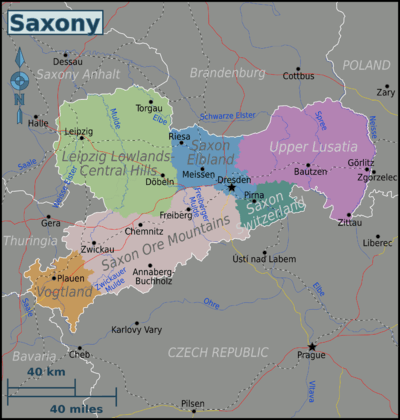
| Leipzig Lowlands-Central Hills Flatlands and gentle hills, with the state's biggest city, medieval castles and monasteries and former strip mines turned into lakes. |
| Saxon Elbland The state's heartland surrounding the capital, magnificent Baroque buildings, vineyards on hills along the river. |
| Saxon Ore Mountains Saxony's highest mountains (up to 1215 metres) with a centuries-old mining tradition; popular wintersports and hiking destination; "land of Christmas" with elaborate advent customs and decorations. |
| Saxon Switzerland Sandstone mountains skimmed by water and wind have resulted in a landscape of picturesque valleys and bizarre rock formations; perfect for hiking and climbing for beginners and experts alike. |
| Upper Lusatia Home to Germany's Slavic minority with their distinct culture and customs; multifaceted landscapes of mountains, hills, heaths, lakes, moors; towns and villages steeped in history. |
| Vogtland Idyllic rolling hills cut through by river valleys; known for its handicraft traditions like lace-making and musical instrument making. |
Cities


- 🌍 Dresden. — must-see state capital with old baroque city centre
- 🌍 Bautzen. — capital city of Upper Lusatia and cultural centre of the Sorbs
- 🌍 Chemnitz. – industrial and arts city, formerly known as Karl-Marx-Stadt
- 🌍 Freiberg. – one of the best preserved medieval old towns, centre of mining, engineering and science.
- 🌍 Görlitz. — well preserved historic city on the border to Poland and Silesia, easternmost point of Germany
- 🌍 Leipzig. — old banking, trade-fair and publishing city famous for its ties to Bach
- 🌍 Meissen. — medieval cathedral and famous for its Meissen (Chinese) porcelain, medieval residence of the Saxon dukes
- 🌍 Plauen. — famous for its lace industry
- 🌍 Zwickau. – one of the early centers of Germany's automobile industry prior to the Second World War
Itineraries
Understand
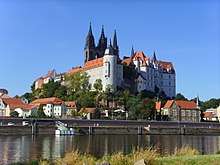
Middle Ages
During the early Middle Ages, most of today's Saxony was populated with Slavs. Many place names are of Slavic origin (including the names of the major cities Dresden, Leipzig and Chemnitz), typically ending in -itz or clustering sibilants like 'z' and 'sch' in a way that is difficult to pronounce even for Germans from other regions (one of the most extreme examples may be Zitzschewig). A Slavic population has survived in the ethnic group of the Sorbs, consisting of some 20,000 people native to the Upper Lusatia region of Eastern Saxony who proudly maintain their own language and traditions. Most Slavs however either moved east or were assimilated by the German-speaking majority since the 12th-century German "East Colonisation".
The population of Saxony is mostly unrelated to the ancient tribe of the Saxons, native to Northern Germany, who were one of the roots of England's Anglo-Saxon population. The name Saxony was only conferred to this territory for dynastic reasons in the 15th century. Until then, it had been known as the Margravate of Meissen, named after its capital Meißen which is the oldest cathedral city in Saxony.
Early Modern Age

At a time when each of the German tribes spoke its own dialect that were barely mutually intelligble, and most written texts were in Latin, the idiom of the Meissen administrators was considered the exemplary variant of Germany's native language. When Martin Luther translated the Bible into German, he was strongly guided by this language, thus the modern Standard German has its roots in Saxony. Until the 18th century upper-class parents from other regions sent their sons to schools in Saxony in order to learn "proper" German. Ironically, the Saxon dialect nowadays is one of the most unpopular ones, being considered very unattractive and derided by most Germans from other regions.
Saxony was the first among German states to officially adopt the Protestant teachings of Martin Luther and is therefore considered the "motherland" of Protestant Reformation. According to the rule of "Whose realm, his religion" (cuius regio, eius religio) all inhabitants had to convert to Protestantism, too (or emigrate). Since that time, the rulers of Saxony were considered first among equals in the Lutheran (Protestant) camp. However, the princes and kings of Saxony managed to be on the wrong side of almost every war since the 16th century and gradually lost territory and influence due to that.
Still, productive silver mining in the Saxon Ore Mountains, fertile farmland in the central hills and lowlands, and thriving trade (Leipzig holding one of the prime trade fairs in Central Europe) made Saxony one of the richest regions in Germany. Thus you will barely find the "typically German" half-timbered houses in Saxony's old towns, as they were once a sign of poverty, while most Saxon burghers could afford costly stone houses. Many towns, even smaller ones, boast imposing Renaissance town halls and large market squares, that are hard to find in Northern or Western German towns of that size.
The golden age of Saxony's glory was the Baroque period of the late-17th and early-18th century, when Saxon elector August der Starke ("Augustus the Strong") bribed his way to be elected King of Poland (converting to Catholicism to be eligible for this crown, while his Saxon subjects were allowed to keep their Protestant faith, this time). He spent enormous sums to realise his dream of Dresden being one of the most glamourous capitals of Europe, building magnificent churches, an opera house and whole new quarters in the Baroque style, as well as numerous châteaux and mansions across the state (also for his several mistresses and many children). He also collected art treasures in his picture gallery and china collection, in addition to staggering creations of jewelry in his "Green Vault". This reckless spending was far more than even the relatively affluent state of Saxony could afford. At that time, Meißen was the first manufacture of porcelain in Europe, which previously had to be imported from China.
Recent history and economy
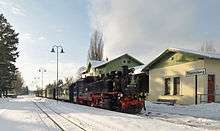
Saxony is also notable as the first industrial center of Germany. Leipzig and Dresden where the first mainland European cities to be connected by a long distance railway in the 1830s, while Zwickau and Chemnitz were among the cradles of the German automobile industry before World War II. Thus, the late-19th century Gründerzeit was another boom period of Saxon cities with whole quarters of multi-family houses and villas surviving from that time (mostly renovated during the 1990s and 2000s). Naturally, the war hit those industrial centers and transport hubs particularly hard and after the war, the Soviets dismantled a lot of industrial infrastructure and shipped the parts to the USSR, which together with a "brain drain" of East Germany in its first decade and questionable economic policies hit the area hard.
During communist rule in East Germany (GDR), Saxony was culturally and economically dominant in the new state and people from the "west" (the old Federal Republic of Germany) think of a Saxon accent if they want to portray a stereotypical "easterner" (Ossi). The Messe (trade fair) in Leipzig was for a long time the pride of the regime and Saxony's window to the world, as it attracted many visitors from "capitalist" countries. Although the war and the incredibly bland GDR architecture have destroyed a lot of what used to be beautiful in cities like Dresden, Leipzig and Chemnitz (renamed Karl-Marx-Stadt during GDR-times), happenstance, ideology and lack of funds also preserved many things that were lost in western Germany such as many scenic narrow gauge railways or tramways that are among the most extensive and reliable in Germany.
Plauen, Leipzig and Dresden were among the origins of the 1989 Peaceful Revolution that led to the end of communist rule and the reunification of Germany. Once deeply "red" (i.e. socialist), Saxony has been governed by the conservatives uninterruptedly since 1990. The sudden introduction of market economy led to an almost complete collapse of Saxony's industries with hundreds of thousands losing their jobs at the same time. On the other hand, Saxony recovered from the economic transformation faster than the other "New states", now hosting state-of-the-art plants of renowned automotive (Volkswagen, BMW, Porsche) and high-tech producers (GlobalFoundries, Infineon). New jobs in management, cultural and creative industries even attract well-educated "immigrants" from the western states. However, there is a substantial gap between booming cities like Leipzig and Dresden and left-behind rural areas, giving rise to far-right parties and movements.
Today
Almost forgotten until the wall came down, Saxony now attracts travellers from all over the world, who come looking for beautiful historic (many of them rebuilt) buildings, breathtaking scenery of Saxon Switzerland or just to buy a hand-carved nutcracker in the Saxon Ore mountains. While it certainly is not a budget destination, it is notably a cheaper place to go than western Germany with wages lower, and lines for attractions shorter than in Bavaria.
Talk
Language of communication is naturally German, but the Sorbs in the Oberlausitz also speak their own language. Sorbian is a sister language of Polish and Czech. The Saxon accent is quite strange for most other Germans and therefore often ridiculed and used in comedy. Regardless, the Saxons are very proud of it and it remains a strong part of the region's identity.
English is widely spoken and many, especially young people, have a basic knowledge of another foreign language, like French, Spanish or Italian. Russian might be understood by the middle-aged and older Saxons, but with a growing Russian-German community, you might even find a native speaker of the language. In many regions close to the border you will find at least some signage in Czech or Polish. In tourist-oriented hotels as well as some shops you might also encounter signage or people speaking Russian, as there has been a lot of Russian shopping-tourism in recent times, especially to Dresden.
Get in
By plane
Saxony has two mid-sized airports used for scheduled passenger flights in Leipzig/Halle (LEJ IATA) and Dresden (DRS IATA). Both see mostly domestic connections in addition to flights catering to package tourists from Saxony going to holiday destinations around the Mediterranean Sea. Direct connections from/to major European cities are few. Both have frequent inexpensive (around 2–3€ one way) direct S-Bahn service to the centrally located Hauptbahnhof (main station) of their respective cities, from where you may transfer to other parts of Saxony. Leipzig airport station is even served by intercity trains at a two-hourly interval, linking it directly with Riesa and Dresden. Car rentals are present at both airports.
An alternative is to fly to one of the Berlin airports (Tegel/TXL IATA or Schönefeld/SXF IATA) that see a lot more connections and from where it takes less than two hours to Leipzig by public transportation. From Schönefeld airport, there is also a Flixbus connection to Dresden, taking just over two hours. By car, it takes less than two hours from either Berlin airport to Leipzig or Dresden.
From Frankfurt airport (FRA IATA)—Germany's main international hub—there are two-hourly direct ICE connections, taking 3:20 hrs to Leipzig and 4½ hours to Dresden. Flying to Prague (PRG IATA) may be a feasible option for some travellers thanks to good road connections with Dresden (less than two hours by car), but not so much if you are dependant on public transportation or going to the northern or western parts of Saxony. Flying to Wrocław (WRO IATA) is only a serious option if your destination is in the eastern part of Saxony (Upper Lusatia) and you rent a car, otherwise the transfer will be tedious.
By train
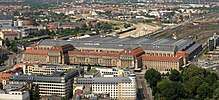
The main hubs for rail travel are Dresden and Leipzig, served by the high-speed lines Hamburg–Berlin–Leipzig–Nuremberg–Munich and (Stuttgart–)Frankfurt–Leipzig–Dresden, each at an hourly or two-hourly interval. By ICE high-speed train, Leipzig is 1:15 hr from Berlin and just over three hours from Frankfurt, Hamburg or Munich. Leipzig boasts one of the biggest train stations in Germany with a wide variety of shops and free Wifi. The third place with ICE and intercity service is the central Saxon town of Riesa (halfway between Leipzig and Dresden); while Chemnitz is Germany's biggest city that never sees a long-distance train.
Another main intercity line serving the state is the hourly connection Hanover–Leipzig–Dresden, with every other train coming from either Bremen or Cologne and Dortmund. The two-hourly Eurocity Hamburg–Berlin–Prague passes through Dresden and Bad Schandau (Saxon Switzerland), Dresden being just over two hours from either Berlin or Prague.
Entering from Poland has become a little less comfortable since 2018, when the direct link between Wrocław and Dresden was suspended. The trip now requires a change of trains in Węgliniec near the German-Polish border (as the Polish half of the route is electrified while the German one is not) and takes about 3:15 hrs, while the quickest connection from Wrocław to Görlitz takes just over two hours.
From the neighbouring states you may also enter Saxony with regional express (RE) trains (i.e. local trains that do not stop at every station), namely from Hof, Bamberg and even Nuremberg in [Franconia]] (the RE takes twice as long as the ICE, but may be worth considering for travellers on a shoe string and groups, thanks to special offer tickets); Cottbus in Brandenburg; Dessau, Naumburg or Wittenberg in Saxony-Anhalt; Gera, Jena or Weimar in Thuringia. There are also some cross-border connections with local trains from neighbouring regions in the Czech Republic (North Bohemia), including Cheb, Děčín and Liberec.
Saxony, Saxony-Anhalt and Thuringia Ländertickets are valid on regional trains and buses in all three states. In the vicinity of the Czech-German-Polish border triangle, you may profit from the unified fare of the ZVON transport system ("Euro-Neisse" ticket), valid for regional transport in all three countries. Between the Dresden area and the Ústí region in Northern Czechia, including the Saxon Switzerland and Bohemian Switzerland regions, you may use the cross-border "Elbe-Labe" ticket.
By bus
Saxony's major (and some of the minor) cities are all served to varying degrees by long distance buses both domestic (most of them newly emerging or recent due to a change in laws around 2012/13 that prohibited this development earlier on) and international (most of them existing since at least 1990). Berlin is particularly well served for historic reasons as well as because of the bad railway connection between Dresden and Berlin and (historically) Leipzig and Berlin
Get around
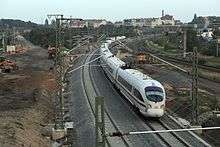
Public transport is for the most part good, fast and reliable. If you plan to do a day trip the "Sachsen-Ticket" might just be what you are looking for. It costs 23€ for one person plus 5 € for each additional member of your group up to five and covers all regional trains in Saxony, Saxony Anhalt and Thüringen plus public transport in Leipzig, Zwickau, Görlitz, Halle, Erfurt, Gera, Jena and Dresden. Validity is from 9 am on working days (all day on weekends) until 3 am the following morning. Unfortunately, Saxony has bucked the general German trend towards more and better local train service. Some routes have been cancelled in recent years while others are acutely threatened with cancellation subject to federal funds, which were reduced for Saxony in a recent readjustment.
There are several narrow gauge heritage railways, especially in the Ore mountains. As most of them are privately run (some not-for-profit) the Sachsen Ticket usually isn't valid on them.
In some areas of the countryside, buses run only once a day.
See

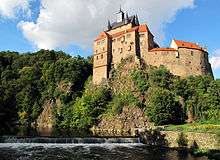
Saxony's only UNESCO World Heritage site is the park of Bad Muskau, one of the largest and most beautiful English-style landscape gardens in continental Europe. The cultural landscape of the Dresden Elbe Valley, including Dresden's old town, Baroque churches, palace, châteaux and mansions, art collections and music traditions, used to hold the World Heritage title as well. But it was retracted from the list due to the construction of a new bridge which UNESCO did not approve of. That does not however make Dresden and its surroundings any less worth visiting. The Ore Mountain Mining Region is a joint Czech-German candidate for the World Heritage but has not yet been confirmed by UNESCO. Several of the former mines can be visited in guided tours.
Other natural sights are found in the mountain landscape of Saxon Switzerland with bizarre and pictorial sandstone rock formations (like the Pfaffenstein and Barberine), steep river valleys and picturesque views, e. g. at the Bastei bridge near Kurort Rathen. The Saxon Ore Mountains have their distinctive rock formations as well, e. g. the granitic Greifensteine near Ehrenfriedersdorf.
When it comes to man-made sights, Saxony is mostly known for its castles, ranging from medieval fortresses on hilltops to fairytale Renaissance castles, Baroque residences and hunting châteaux. Most of them are found in the regions of Leipzig Lowlands-Central Hills (e.g. Colditz Castle, Kriebstein, Schloss Hartenfels in Torgau) and Saxon Elbland (e.g. Meißen castle, Moritzburg, and the numerous palaces in and around Dresden).
Churches and monasteries are no less prominent, including the cathedrals of Meißen, Freiberg and Bautzen, the Romanesque Wechselburg basilica, Dresden's Frauenkirche (Church of Our Lady) and Catholic court chapel or the Baroque monastery of St. Marienthal in Upper Lusatia, close to the Polish border. Visitors interested in religious history may go to Herrnhut, being the place of origin of Moravian Church (Unitas Fratrum) which now has followers around the world. Those with affinity to the LDS Church may take interest in the Freiberg Germany Temple which at the time of its dedication in 1985 was the only Mormon temple in the whole Eastern Bloc.
In general, Saxony has a large number of lovely old towns. While Dresden - at the time an important railway hub and close to the advancing Eastern Front - is one of the saddest examples of carpet bombing during World War II, many of the smaller and mid-sized towns have survived the war almost unscathed. The best example may be Görlitz which is pretty much a real-life picture book of German architectural history with examples from almost every period from medieval via Renaissance, Baroque and Neoclassical to Art Nouveau. This is the reason why scenes for many period films have been shot here, including the international blockbusters Inglourious Basterds and The Grand Budapest Hotel, earning the town its nickname "Görliwood". There are special guided tours to the filming locations. Another prominent example is the old town of Bautzen with its many medieval towers.
Do
.jpg)
- Saxon Switzerland is an excellent hiking and climbing area, for both beginners and advanced climbers.
- The man-made lake districts around Leipzig and in Lusatia boast "the longest sand beaches between Baltic Sea and Adria" and offer a range of watersports, including sailing, windsurfing, kitesurfing, jet-ski etc.
- Canoeing on smaller and medium-sized rivers (e.g. Mulde in the Central Hills, Neisse and Spree in Upper Lusatia) and lakes. In Leipzig you may even do a kayak tour within the city, thanks to many river branches and canals.
- Cycling tours, e.g. along the well-developed and signposted Elbe, Oder-Neisse or Muldental bike trails.
- Winter sports in the Saxon Ore Mountains and Zittau mountains, especially cross-country and downhill skiing. Due to the climate change, the amount of snow has varied during the recent years. Only Oberwiesenthal (914 m above sea level) is considered "snowsure" all winter long.
- Visit an opera performance at the Semperoper in Dresden or a classical concert of the Gewandhaus orchestra in Leipzig.
Eat
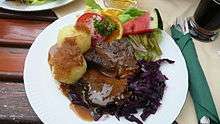
Saxon cuisine is usually described as hearty and savoury, not unlike in neighboring Thuringia, Bohemia (Czech Republic), Franconia or Bavaria. Like in most regions of Germany, main dishes typically consist of meat (usually pork or beef, but also poultry or venison), potatoes in any form (be it boiled, peeled or in the skin, fried, mashed, or as dumplings), vegetables (typically carrots, peas, green beans, sauerkraut, red cabbage or mushrooms), and gravy.
Typical Saxon dishes include potato soup, sauerbraten (a marinated pot roast) or meatloaf (locally known as Wiegebraten or falscher Hase, literally "faux rabbit"). Sausages that are only eaten as spread in other German states, like liverwurst or Grützwurst (a kind of pudding containing meat and groats), may be served as a main dish in Saxony, served with potatoes, sauerkraut, and mustard (preferably from Bautzen). Hot Grützwurst, freed from its skin and therefore runny, is called Tote Oma—"dead granny"—and is considered unappetizing even to some locals, while those who have grown up with this tradition love it.
Fish dishes typically include trouts and carps, that may be draught in local rivers or ponds. Wermsdorf in Central Saxony is a stronghold of fish farming, celebrating the Horstseefischen festival at the end of each year's carp fishing season in October. Trout is most commonly served as Forelle Müllerin Art ("trout meunière"), i.e. fried and served with browned butter. If carp is on the menu, it is usually Karpfen blau, meaning the fish is poached until its skin gets a bluish shade.
Each sub-region has its own local cooking traditions and specialities, most notably a variety of different potato fritters in the Saxon Ore Mountains, linseed oil in Upper Lusatia, and Leipziger Allerlei (mixed vegetable including carrots, peas, asparagus, morels and, at least in the original version, crayfish).
Being one of Germany's easternmost regions as well as politically and culturally connected to the USSR during GDR times, Saxony boasts a lot of Slavic influences in its cuisine, notable in dishes like cabbage rolls, dumplings or Soljanka (a soup with various pieces of sausage, meat and vegetables, traditionally eaten with sour cream and lemon juice).
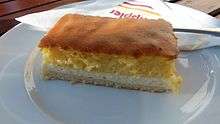
On the other hand, Saxons are also known for having a sweet tooth. Many locals, especially the elderly, consider their afternoon coffee and cake (Gaffee und Guchn in the local dialect) not just a snack, but a full meal. A local cake specialty that is unknown outside Saxony or Thuringia ("to the detriment of mankind", as Dresden-born Erich Kästner wrote) is Eierschecke, consisting of three layers: a preferably very thin base of yeast dough, a curd-and-blancmange cream in the middle and fluffy yolk cream on top. A typical Saxon dessert is Quarkkäulchen, little balls of mashed potatoes, quark (curd), egg and raisins, fried in a pan, sprinkled with sugar and cinnamon.
As in all states of former East Germany, ethnic restaurants and diners are less common than in the Western states, due to the smaller percentage of immigrants. "Asian" (i.e. Vietnamese) diners and food trucks are more widespread than Turkish or Arabic ones. The typical Turkish-German Döner kebab shops exist in Leipzig, Dresden and other bigger towns, but they are usually not up to par with those in Berlin or the Western states.
Drink
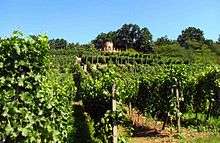
The Elbe valley between Dresden and Meissen is the easternmost wine area in Germany and on the northeastern edge of wine-growing in Europe. Mainly white wines like Riesling, Pinot and Traminer are grown. High-quality sparkling wine (Sekt) is produced according to the traditional method like champagne. There are plenty of wineries in the hills to the northeast of the Elbe downriver from Dresden, connected by the tourist route "Sächsische Weinstraße" (Saxon Wine Route).
Outside this small region, Saxony is rather a beer-drinking territory. Each sub-region has its own breweries. Many have been bought up by big national or international groups and produce mainstream Pilsner that is hard to distinguish from other brands. However, there is quite a number of smaller breweries producing craft beer or traditional, local beer types.
The people of Saxony are known for drinking a lot of coffee and thus nicknamed Kaffeesachsen. Leipzig boasted one of the first coffeehouses in Central Europe (which is still in service). The great quantity of consumption is not necessarily reflected in a high quality of the coffee that is served. At least in Leipzig and Dresden you will however find cafes that sell varietal coffee fresh from the roast.
Saxony also cultivates fruit, mostly apples. So, try some unfiltered NFC apple juice from local meadow orchards that is much more aromatic than the industrial juice from the supermarket.
Nightlife is concentrated in Leipzig, Dresden and Chemnitz (in descending order). Outside these cities you will hardly find anything but pubs closing around midnight (at the latest!) or a village disco.
Stay safe
Yes, there are Neo-Nazis and xenophobes in Saxony (until 2014 the far-right NPD was represented in its state Parliament, anti-Islam movement Pegida could draw large crowds in Dresden while failing to become big anywhere else in Germany and the right-wing AfD was the strongest party in Saxony in the last elections for the German parliament). Aggressive or even violent actions against refugees happen more often than in other places in Germany. So far, they hardly targeted tourists and were mostly present in run down neighborhoods of the big cities (Dresden-Gorbitz, Dresden-Prohlis, parts of Hoyerswerda and Leipzig) or some rural communities in Saxonian Switzerland. However, protests against refugees organized by the right-wing party AfD, anti-Islam Pegida and more radical groups are particularly frequent in Saxony and turn increasingly radical incl. exhibitions of violence against journalists and foreigners such as in Freital, Heidenau, Chemnitz.
Otherwise the security situation in Saxony isn't any worse than in most other parts of Germany (which is to say, very good when compared to almost all populated parts of the world), but the usual cautions in big crowds (pickpocketing), run down neighborhoods and alone at night can't do any harm.
Go next
- Poland via Görlitz (just cross the river et voila you're in Poland)
- The Czech Republic via a scenic (albeit slow) train connection in the valley of the Elbe, as well as the Elbe Radweg
- Franconia via Hof and Nürnberg
- Brandenburg and the lakes of the Lausitzer Neuseenland (former open pit lignite mines now converted to tourist friendly lakes)
- Saxony-Anhalt and Thüringen with the Sachsen Ticket (valid in all three regions on all regional trains)